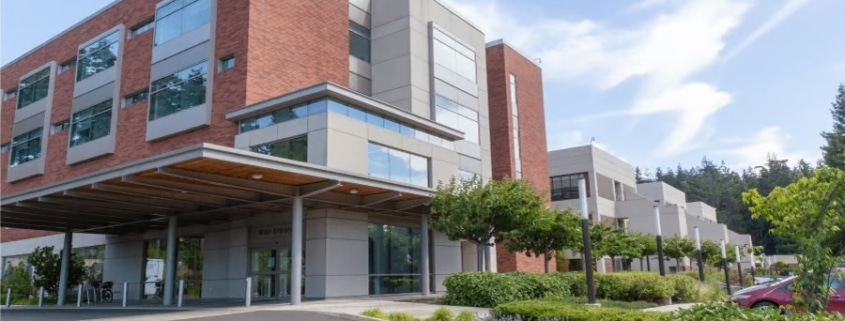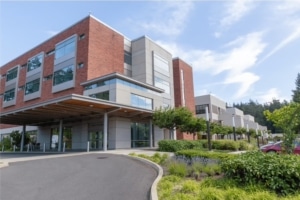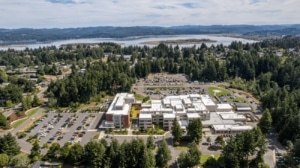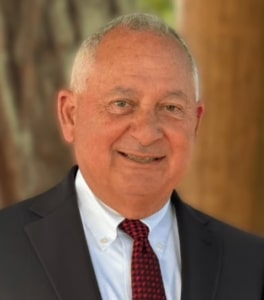Bay Area Hospital: Navigating Challenges, Building A Sustainable Future
Bay Area Hospital, the cornerstone of health care on Oregon’s South Coast, is at a critical juncture.
As the only Level III trauma center, comprehensive cancer center, and catheter lab-equipped facility serving a 150-mile stretch from Florence to Crescent City, the 172-bed hospital is vital to the region’s health and economy.
With nearly 1,000 on staff, Bay Area Hospital is the largest employer in the area, providing 27,620 emergency department visits, 138,332 outpatient visits, and 3,702 surgeries annually. Yet, financial challenges threaten its ability to continue this legacy of care. Interim CEO Kelly Morgan reflects on the hospital’s journey and its path forward, emphasizing the need for community and state support to secure a sustainable future.
A Legacy of Resilience Amid Financial Strain
Bay Area Hospital has faced significant financial hurdles, exacerbated by a rural socio-economic landscape marked by lower life expectancy, higher poverty, and a median household income 33.3% below Oregon’s average.
With just 14% of patients covered by commercial insurance in 2024, the hospital relies heavily on Medicaid and Medicare, which reimburse at rates far below costs — 56 cents and 82 cents per dollar spent, respectively. Coupled with rising labor and supply costs, this has led to substantial financial losses: $32.8 million in FY2023, $6.7 million in FY2024, and $24 million in FY2025, averaging $2 million monthly losses over the past 14 months.
The hospital’s cash reserves have dwindled from 152 days in June 2022 to just 56 days by August 2025, a 63% drop. A $45 million loan from the Bank of Montreal, currently in default with a $35.3 million balloon payment due in December 2030, adds further pressure.
“We’ve been through a tough period, no question,” Morgan said. “The pandemic, stagnant reimbursement rates, and operational challenges like billing system issues have hit us hard. But this hospital has been a beacon of care since 1974, and our team’s commitment to this community has never wavered.”
Letter of Intent Terminated With Quorum
In December 2024, Bay Area Hospital signed a non-binding Letter of Intent with Quorum Health, a private equity-backed firm based in Tennessee, to explore a partnership to stabilize operations.
The proposal faced strong community opposition, led by United Food and Commercial Workers Local 555, concerned about losing local control and Quorum’s history of closing rural hospitals. On Aug. 8, 2025, Quorum terminated the agreement, citing the need for Bay Area to focus on strengthening its operations.
“We felt it would be appropriate for both sides to step back,” said Quorum Health CEO Chris Harrison.
Morgan sees it as an opportunity.
“The Quorum deal didn’t work out, but it showed us how deeply this community cares about keeping Bay Area Hospital local,” he says. “We’re now doubling down on a turnaround plan that prioritizes local solutions and financial sustainability, working closely with community leaders, the state, and our staff to chart the right path.”
A Plan for Sustainability
The hospital’s financial sustainability plan focuses on three goals: saving the hospital, finding a local solution, and achieving long-term financial stability.
Immediate actions include expense reductions like a hiring freeze, reducing full-time staff, eliminating travel nurses, and renegotiating professional and purchased services contracts. On the revenue side, efforts are underway to renegotiate third-party payer contracts and optimize billing and collections through improved pre-authorizations, denials management, admissions documentation, timely filing, and charge capture.
Significant capital needs also loom, with $59.9 million required for infrastructure upgrades, critical equipment replacement, and an aging building’s maintenance. The hospital’s electronic health record partnership with St. Charles is set to expire in 2027, and transitioning to a new system, likely Epic, is estimated to cost $22.3 million.
“These investments are non-negotiable if we want to keep delivering advanced care like our cancer center or catheter lab services,” Morgan says. “But we can’t do it alone. We need state support, like the $10 million bill that didn’t pass this year, and we’re working with legislators and the Hospital Association of Oregon to secure Medicaid funding for rural hospitals like ours.”
A Call for Community and State Support
As a standalone Diagnosis-Related Group (DRG) hospital unaffiliated with a larger health system, Bay Area faces unique challenges. It’s one of only two such hospitals in Oregon and the only one not receiving an enhanced Medicare wage index, putting it at a financial disadvantage. Surrounded by three Critical Access Hospitals within a 27-mile radius, it bears the burden of providing specialized care without tax support, a rarity for a health district.
Morgan however, said he remains optimistic.
“We’re not just a hospital; we’re where people have their babies, get life-saving heart treatment, and find hope through our cancer center. With a little help — whether it’s state funding, community backing, or new local partnerships — we can build a future where Bay Area Hospital thrives for generations. We’re here for good, and we’re fighting to stay that way.”
— Kelly Morgan, Interim CEO, Bay Area Hospital





